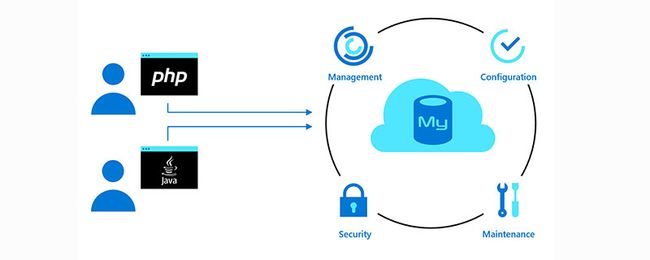mysql行级锁原理_mysql行级锁实现原理是什么
mysql行级锁实现原理:1、InnoDB行锁是通过给索引项加锁来实现的,这一点mysql和
oracle不同;2、InnoDB这种行级锁决定,只有通过索引条件来检索数据,才能使用行级锁,否则,
直接使用表级锁。
mysql行级锁实现原理:
锁是在执行多线程时用于强行限定资源访问的同步机制,数据库锁根据锁的粒度可分为行级锁,
表级锁和页级锁
行级锁
行级锁是mysql中粒度最细的一种锁机制,表示只对当前所操作的行进行加锁,行级锁发生冲突
的概率很低,其粒度最小,但是加锁的代价最大。行级锁分为共享锁和排他锁。
特点:
开销大,加锁慢,会出现死锁;锁定粒度最小,发生锁冲突的概率最大,并发性也高;
实现原理:
InnoDB行锁是通过给索引项加锁来实现的,这一点mysql和oracle不同,后者是通过在数据库中
对相应的数据行加锁来实现的,InnoDB这种行级锁决定,只有通过索引条件来检索数据,才能使用行
级锁,否则,直接使用表级锁。
特别注意:
使用行级锁一定要使用索引
举个栗子:
创建表结构CREATE TABLE `developerinfo` (
`userID` bigint(20) NOT NULL,
`name` varchar(255) DEFAULT NULL,
`passWord` varchar(255) DEFAULT NULL,
PRIMARY KEY (`userID`),
KEY `PASSWORD_INDEX` (`passWord`) USING BTREE
) ENGINE=InnoDB DEFAULT CHARSET=utf8;
插入数据INSERT INTO `developerinfo` VALUES ('1', 'liujie',
'123456');
INSERT INTO `developerinfo` VALUES ('2', 'yitong', '123');
INSERT INTO `developerinfo` VALUES ('3', 'tong',
'123456');
(1)通过主键索引来查询数据库使用行锁
打开三个命令行窗口进行测试命令行窗口1命令行窗口2命令行窗口3
mysql> set autocommit = 0;Query OK,
0 rows affectedmysql> select * from developerinfo where userid = '1' for
update;+--------
+--------+----------+| userID | name | passWord |+--------+--------
+----------+| 1 | liujie | 123456 |+--------
+--------+----------+1 row in setmysql> set autocommit = 0;Query OK,
0 rows affected
mysql> select * from developerinfo where userid = '1' for
update;
等待mysql> set autocommit = 0;
Query OK, 0 rows
affected
mysql> select * from developerinfo where userid = '3' for
update;
+--------+------+----------+
| userID | name | passWord |
+--------
+------+----------+
| 3 | tong | 123456 |
+--------
+------+----------+
1 row in set
mysql>
commit;Query OK,
0 rows affectedmysql> select * from
developerinfo where userid = '1' for update;+--------+--------
+----------+| userID | name | passWord |+--------+--------
+----------+| 1 | liujie | 123456 |+--------
+--------+----------+1 row in set
(2)查询非索引的字段来查询数据库使用行锁
打开两个命令行窗口进行测试命令行窗口1命令行窗口2
mysql> set autocommit=0;
Query OK, 0 rows affected
mysql>
select * from developerinfo where name = 'liujie' for update;
+--------
+--------+----------+
| userID | name | passWord |
+--------+--------
+----------+
| 1 | liujie | 123456 |
+--------
+--------+----------+
1 row in setmysql> set
autocommit=0;Query OK, 0 rows affectedmysql> select * from developerinfo
where name = 'tong' for update;
等待
mysql> commit;
Query OK, 0 rows affectedmysql> select * from developerinfo where name = 'liujie' for
update;
+--------+--------+----------+
| userID | name | passWord |
+--------+--------+----------+
| 1 | liujie | 123456 |
+--------+--------+----------+
1 row in set
(3)查询非唯一索引字段来查询数据库使用行锁锁住多行
mysql的行锁是针对索引假的锁,不是针对记录,所以可能会出现锁住不同记录的场景
打开三个命令行窗口进行测试命令行窗口1命令行窗口2命令行窗口3
mysql> set autocommit=0;
Query OK, 0 rows affected
mysql>
select * from developerinfo where password = '123456
' for update;
+--------+--------+----------+
| userID | name | passWord |
+--------
+--------+----------+
| 1 | liujie | 123456 |
|
3 | tong | 123456 |
+--------+--------+----------
+
2 rows in setmysql> set autocommit =0 ;
Query OK, 0 rows affected
mysql> select * from developerinfo where userid =
'1' for update;
等待mysql> set autocommit = 0;
Query OK, 0 rows
affected
mysql> select * from developerinfo where userid = '2
' for
update;
+--------+--------+----------+
| userID | name | passWord |
+--------+--------+----------+
| 2 | yitong | 123
|
+--------+--------+----------+
1 row in set
commit;mysql> select * from developerinfo where userid = '1' for
update;
+--------+--------+----------+
| userID | name | passWord |
+--------+--------+----------+
| 1 | liujie | 123456 |
+--------+--------+----------+
1 row in set
(4)条件中使用索引来操作检索数据库时,是否使用索引还需有mysql通过判断不同执行计划来
决定,是否使用该索引,如需判定如何使用explain来判断索引,请听下回分解更多相关免费学习推荐:mysql教程(视频)
